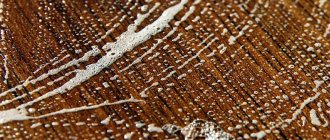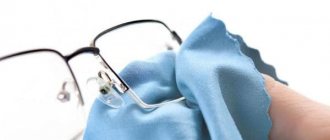Cast iron is a material familiar to distant ancestors. It has long been used for preparing drinks and dishes. But cast iron is a finicky alloy, and to use cast iron cookware for a long time, you need to follow the rules for caring for cast iron cookware, as well as storing and cooking food in the container. The most famous cast iron cookware is the frying pan, which is loved by housewives for its properties, simplicity and convenience. In this article you will learn how to care for a cast iron frying pan.
The most famous cast iron cookware is the frying pan, which is loved by housewives for its properties, simplicity and convenience.
Features of cast iron cookware
Like other materials, cast iron has characteristics that must be taken into account when purchasing and using, and care for the new product after purchase. Knowing these qualities, the housewife will understand how to properly care for a cast iron frying pan, and the container will serve her for a long time.
- There are two types of cookware: cookware made of pure cast iron or cast iron coated with enamel;
- Cast iron does not tend to rust;
- The alloy has poor thermal conductivity (the cookware takes a long time to heat up, but also takes a long time to cool down);
- He is not afraid of overheating, because the melting point is 1400C;
- The alloy has an impressive weight;
- Cast iron is a porous material, and oil is used in cooking to prevent food from burning, so you cannot cook on non-enameled cookware without oil.
Cast iron is not afraid of overheating, because the melting point is 1400C.
Each dish requires its own type of cookware, so it is better to familiarize yourself with the properties and features of this material. And according to the features, think about proper care of your cast iron frying pan.
A few words about cast iron
Cast iron is an alloy of iron with carbon, silicon and phosphorus. Products from this material are cast at a temperature of 1400 degrees, most often they do not have seams, as they are produced in special molds, which are split after production. The cast blank is carefully cleaned and processed, and then handles and other parts are attached to the body.
Cast iron cookware has been known since ancient times, approximately from the 4th-6th centuries. BC. It is impossible to indicate the specific area of its appearance, since samples dating back to the same period were found in Europe, Africa, and Asia. In Russia, the first products appeared only in the 16th century. Previously, clay containers were used to prepare hot food, but later cast iron objects replaced them due to their more advanced qualities.
Food cooked in a cast iron frying pan has good taste, and the cookware itself is strong, durable and practical. Very often, such products were passed down by inheritance and were used by several generations, so even now you can find cast iron products in modern kitchens in Russia.
Daily care
Caring for cast iron pans is not easy. You must handle the product with care, do not throw it or force it. Basic care involves proper use in cooking, washing after cooking and storing the utensils.
To extend the life of the product, housewives apply a thin layer of oil after each use.
To extend the life of the product, housewives apply a thin layer of oil after each use. In this case, the porous surface structure will be reliably protected from the external environment.
How to Clean a Cast Iron Frying Pan After Cooking
How to wash a cast iron frying pan after cooking? There are several rules under which the product will be unfamiliar with soot and difficult-to-remove contaminants. It is important to wash dishes immediately after preparing food. This should be done in hot or warm water so that the fat is washed off well. Do not use a rough metal surface to wipe off dirt: choose plastic sponges and scrapers. Dry it thoroughly and place it in the designated storage area.
It is important to wash dishes immediately after preparing food.
Dry the pan thoroughly after washing to avoid rust, use the oven for good results.
What is it for
- First of all, this procedure is necessary for safe cooking. The fact is that in manufacturing plants, when producing cast iron cookware, they are often lubricated with machine oil, which cannot be eaten. Primary treatment before use helps to destroy this layer.
- Cast iron itself is a porous material. If the surface is not treated, food particles will get into the pores, and over time the process of decomposition and decay will begin, which will lead to an unpleasant odor. In addition, in such a frying pan, in general, it is unlikely that you will be able to cook a good dish; everything will certainly burn. When using a properly heated frying pan, you can fry without oil, just like using expensive Teflon. And washing it is much easier and more pleasant.
- Among other things, annealing serves as an excellent test of the quality of the cookware. If during the procedure the product cracks, the bottom is deformed, or the pan itself changes shape, feel free to return the product to the store. All this is a consequence of low-quality raw materials.
How to store a cast iron frying pan
How to store a cast iron frying pan? There are several rules for storing such a frying pan to extend the life of the product.
- Do not place the product near corrosive chemicals;
- Keep the cast iron product clean and dry, free of food residues;
- After cooking, if possible, transfer the dish to another container to reduce contact with food;
- Make sure there is ventilation in the storage area of the frying pan;
- Do not place other dishes on the frying pan as they should not be subjected to heavy loads.
Keep your cast iron product clean and dry, free of food residues.
Monitor the humidity of the place where the frying pan is located - moisture will damage the product.
Calcination option 2
First you need to wash the product with laundry soap, rinse thoroughly and dry. Place on a well-heated induction or gas stove and heat thoroughly. Sprinkle salt in a 2-centimeter layer and stir constantly until the salt turns dark brown. This product will no longer be needed; it cannot be used for food, since the machine oil that was used to lubricate the frying pan has been absorbed into it.
At the second stage, pour quite a lot of oil into the container, if possible, right to the brim. Place on low heat and wait until it comes to a boil for 20 minutes. The product itself will absorb the required amount of oil. Care must be taken to ensure that the oil does not splash out during boiling, otherwise a fire may occur, especially if a gas stove is used. After cooling, drain the oil and wipe the product dry with a paper towel. To avoid a strong unpleasant odor, it is better to use refined oil.
Preventing rust
Cast iron cookware can rust when exposed to water and various acids. To prevent rust, you need to follow some rules.
- Firstly, before use, the product must be calcined, that is, heated for 30 minutes and then repeat the procedure with vegetable oil. This is done to burn out the industrial composition - manufacturers coat the container against rust.
- Secondly, water is the main enemy of cast iron. Any contact with her must be avoided. Dry and wipe dishes well after washing.
- Thirdly, do not store food in dishes. Food causes oxidation, which eventually leads to rust.
The product must be calcined before use.
Preventing carbon deposits
Soot on a cast iron frying pan cannot be avoided, because over time the non-stick layer wears off and food begins to stick. You can delay this moment as much as possible by properly caring for your cast iron.
- Always keep an eye on the dish when cooking on it - many do not have a non-stick coating and can be seriously damaged when removing the burnt layer;
- Follow the rules for washing dishes after cooking and the natural layer on it will not be damaged.
Always keep an eye on the food when cooking on it.
Caring for old dirty dishes
If it so happens that old dirt remains on the dishes, clean the cast iron in different ways. There are several simple ways to wash a cast iron frying pan after cooking effectively and without damaging the coating or the material itself. This is especially true for caring for a cast iron grill pan, because grilling is a long and tedious process, and the food often sticks and remains on the product.
- A solution of glue, soda and washing powder. All these components need to be diluted with water and a frying pan placed in this container. Then boil for two hours;
A solution of glue, soda and washing powder will help you get rid of carbon deposits. - Acetic acid will help remove burnt fat. Gently wipe the surface with it and then rinse thoroughly so as not to expose yourself and your family to danger;
Acetic acid will help remove burnt fat. - A new assistant in the kitchen of housewives is Coca-Cola. Just leave the cast iron in a tasty drink overnight and the next morning you won’t recognize it – the old dirt will simply fall away.
Old dirt will simply fall away thanks to Coca-Cola.
Do not clean cast iron with strong acids or harsh materials as this material may be severely damaged.
It is better to clean contaminated cast iron immediately, so as not to subsequently resort to extreme measures using acids and hard surfaces.
Useful tips
What to do if the cast iron frying pan is uncoated. There are devices with:
- induction bottom;
- enamel processing;
- non-stick coating.
Often kitchen appliances are adapted for certain types of stoves. Cast iron pans for glass-ceramic hobs must be made of magnetic material. Glass ceramic dishes must have a flat bottom and this bottom should not have any roughness or nicks. Otherwise, energy costs increase and the surface of the slab is severely damaged.
Another option - cast iron frying pans and induction cookers - are well compatible, since cast iron has good ferromagnetic properties. For these stoves, special saucepans with an induction bottom are being developed. Cooking on an induction hob is completely environmentally friendly and safe. The operating principle of an induction cooker is to heat the cookware by induced eddy currents created by a high-frequency magnetic field with a frequency of 20-100 kHz. This frequency is not perceived by the human ear and therefore does not disturb everyday comfort. Considering the fact that cast iron is composed of iron and carbon, it is an excellent choice for an induction furnace.
Now induction cookers have appeared, which themselves determine the nature of the material installed on them, and if it is not ferromagnetic, the cooker does not turn on. The bottom of the dish must be flat, since a convex bottom can produce a hum, working like a diaphragm in an electromagnetic speaker.
The modern market offers a very wide selection of cast iron frying utensils. To understand which companies are better, you need to decide on your priorities:
- price;
- suitability for your cooker;
- aesthetic appearance;
- heaviness of the product;
- ergonomics, ease of use;
- wall thickness, purpose of cooking;
- reputation of the manufacturer, customer reviews.
When buying a cast iron saucepan, you must assume that even your grandchildren will be able to use this product, because these kitchen utensils are very strong and durable.
Restoring non-stick properties
Burnt dishes cause big trouble for housewives. This can be avoided by using products with non-stick coating. But how to restore the coating on it if it has been damaged?
There are a few simple rules:
- Wash and dry the pan thoroughly;
- Next, we use salt: cover the bottom of the dish with it and place in a preheated oven or frying pan for no more than an hour;
- After calcination, treat the surface with oil;
- If the procedure does not produce results, you need to repeat it again.
Handle the hot product carefully - the heavy weight of cast iron and high temperatures make the work quite difficult.
Handle the hot product carefully - the heavy weight of cast iron and high temperatures make the work quite difficult. Hold it by the handle and use oven mitts.
In the old days, people almost always used products to prepare their favorite and delicious dishes.
How to care for a cast iron frying pan? This is serious work in which you need to follow many rules and criteria. But if they follow the instructions, such utensils will last a very long time and will not harm the family with corrosion or burnt dishes. It is no coincidence that in the old days people almost always used products to prepare their favorite and tasty dishes, for example, pancakes or cutlets. They knew how to care for a cast iron skillet. Particular attention should be paid to caring for an uncoated cast iron frying pan, since pure cast iron without coating and impurities is more exposed to the external environment.
Where to begin
Even a new, newly purchased cast iron frying pan needs your attention. The thing is that during the production process the metal undergoes several treatments using oil (even machine oil). If you do not remove the residue, the food will have an unpleasant aftertaste.
Cast iron is a delicate alloy, and to use cast iron cookware for a long time, you need to follow the rules for caring for cast iron cookware.
So, the first stage is cleaning the new frying pan. To do this, use regular rock salt (the coarser the better) and dishwashing sponges.
Before you start using a cast iron frying pan for its intended purpose, it is necessary to clean the product from dirt and impurities using rock salt.
At the first stage, wash the frying pan under hot water without detergent. If you still want to use some additional composition, take laundry soap.
After washing, dry the pan with paper towels.
Place it on the fire and heat it thoroughly.
The calcination process is as follows. Rock salt is poured into the frying pan so that it tightly covers the bottom with a thick layer. Then put it on maximum heat. Important point: do not forget to open the window slightly or turn on the hood.
Regular salt works well - it cleans delicately, and at the same time removes bacteria from pores and cracks.
Leave the pan on the heat for about 30 minutes and stir the salt constantly. During this processing, the salt should acquire a dark shade, which means that it has absorbed unnecessary impurities.
But after such cleaning, be sure to lubricate it with oil and heat it.
After 30 minutes, turn off the heat, add salt and leave the pan until completely cool. After this, rinse the cooled cast-iron frying pan under hot water and wipe dry again.
Wipe the inside of the bottom and sides with a paper towel or napkins.
At the final stage, place the frying pan over medium heat and pour vegetable oil into it. Leave on fire for about 20-30 minutes. This will give your pan some sort of non-stick coating.
Once cooled and oil removed, the pan can be used for cooking.
Important! Be careful with your cast iron skillet while cooking. Heavy weight and high temperatures make work difficult. Be sure to use secure handles or thick oven mitts.











